Ascaris is a genus of parasitic nematodes. The infection, ascariasis, is most often caused by A. lumbricoides. Transmission occurs primarily via ingestion of water or food contaminated with Ascaris eggs. Most patients Patients Individuals participating in the health care system for the purpose of receiving therapeutic, diagnostic, or preventive procedures. Clinician–Patient Relationship with ascariasis are asymptomatic. If symptomatic, characteristics typically follow 2 phases, which correlate with the migration of the parasite through the body. The early phase may include cough, dyspnea Dyspnea Dyspnea is the subjective sensation of breathing discomfort. Dyspnea is a normal manifestation of heavy physical or psychological exertion, but also may be caused by underlying conditions (both pulmonary and extrapulmonary). Dyspnea, and wheezing Wheezing Wheezing is an abnormal breath sound characterized by a whistling noise that can be relatively high-pitched and shrill (more common) or coarse. Wheezing is produced by the movement of air through narrowed or compressed small (intrathoracic) airways. Wheezing. The late phase Late Phase Sepsis in Children typically includes abdominal discomfort, bloating Bloating Constipation, nausea Nausea An unpleasant sensation in the stomach usually accompanied by the urge to vomit. Common causes are early pregnancy, sea and motion sickness, emotional stress, intense pain, food poisoning, and various enteroviruses. Antiemetics, and intermittent diarrhea Diarrhea Diarrhea is defined as ≥ 3 watery or loose stools in a 24-hour period. There are a multitude of etiologies, which can be classified based on the underlying mechanism of disease. The duration of symptoms (acute or chronic) and characteristics of the stools (e.g., watery, bloody, steatorrheic, mucoid) can help guide further diagnostic evaluation. Diarrhea. Heavy infections Infections Invasion of the host organism by microorganisms or their toxins or by parasites that can cause pathological conditions or diseases. Chronic Granulomatous Disease can cause intestinal obstruction and growth impairment in children. A diagnosis is made by recovering an adult parasite from the patient’s stool or by finding eggs in the patient's stool during a microscopic examination. Management includes anthelmintic therapy Anthelmintic therapy Agents that kill parasitic worms. They are used therapeutically in the treatment of helminthiasis in man and animal. Toxocariasis with albendazole Albendazole A benzimidazole broad-spectrum anthelmintic structurally related to mebendazole that is effective against many diseases. Anthelmintic Drugs, mebendazole Mebendazole A benzimidazole that acts by interfering with carbohydrate metabolism and inhibiting polymerization of microtubules. Anthelmintic Drugs, or pyrantel pamoate Pyrantel pamoate Broad spectrum antinematodal anthelmintic used also in veterinary medicine. Enterobius/Enterobiasis.
Last updated: Mar 13, 2025
Ascaris is a genus of parasitic nematodes ( roundworms Roundworms Anthelmintic Drugs).
Adults:
Eggs:
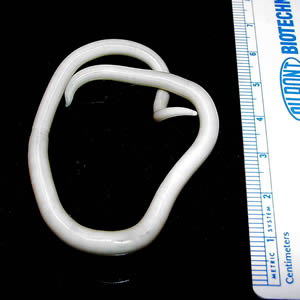
Adult Ascaris lumbricoides worm
Image: “An adult Ascaris lumbricoides worm” by CDC Division of Parasitic Diseases. License: Public Domain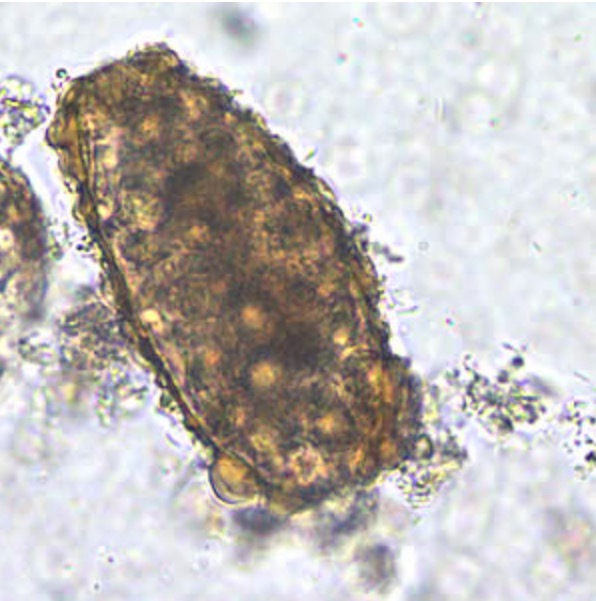
Unfertilized egg of Ascaris lumbricoides on an unstained wet mount
Image: “Ascaris egg” by Centers for Disease Control and Prevention. License: Public DomainAscariasis is caused by:
Ascariasis is one of the most common parasitic infections Infections Invasion of the host organism by microorganisms or their toxins or by parasites that can cause pathological conditions or diseases. Chronic Granulomatous Disease in humans.
A. lumbricoides:
A. suum:
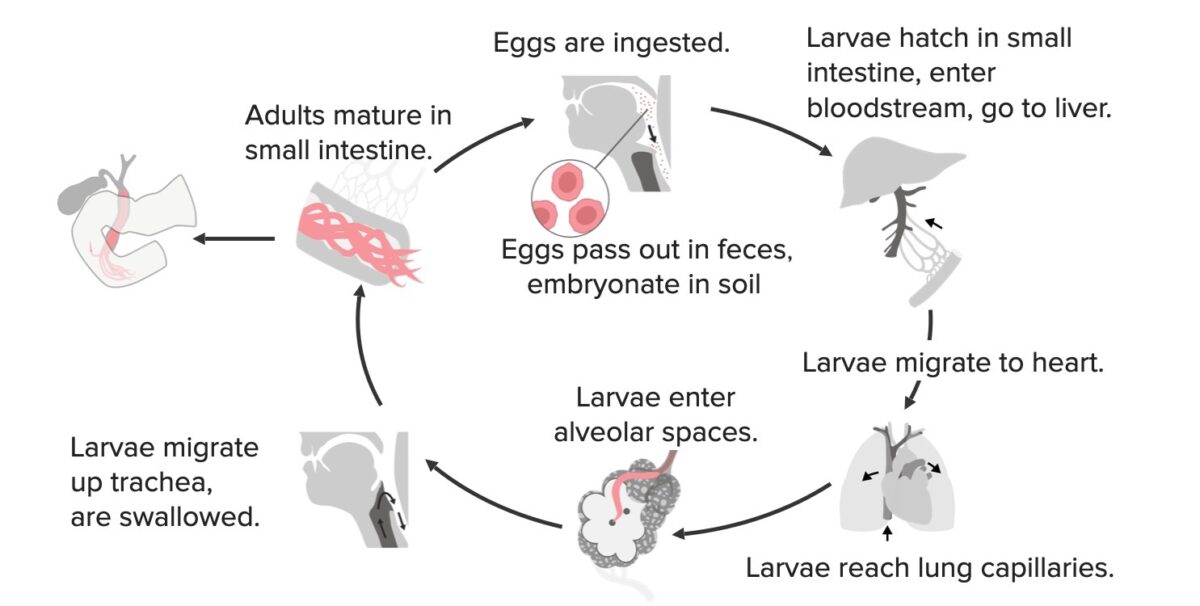
Diagram summarizing the life cycle of Ascaris lumbricoides
Image by Lecturio. License: CC BY-NC-SA 4.0Effect of larvae migration in the lungs Lungs Lungs are the main organs of the respiratory system. Lungs are paired viscera located in the thoracic cavity and are composed of spongy tissue. The primary function of the lungs is to oxygenate blood and eliminate CO2. Lungs: Anatomy → Löffler syndrome:
Effect of adult worms in the GI tract:
Symptoms of Löffler syndrome include:
Definitive:
Supporting evaluation:
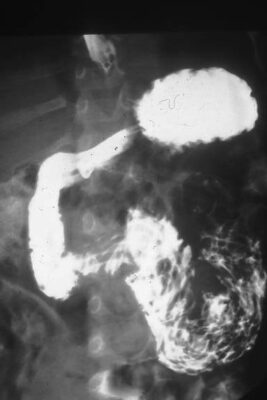
An abdominal X-ray with barium swallow in a patient with ascariasis:
Adult worms appear in the duodenum as a tangled mass (black areas) within the white of the contrast medium.
| Organism | Enterobius vermicularis Enterobius Vermicularis Enterobius/Enterobiasis | Toxocara canis Toxocara canis A species of parasitic nematode found in the intestine of dogs. Lesions in the brain, liver, eye, kidney, and lung are caused by migrating larvae. In humans, these larvae do not follow normal patterns and may produce visceral larva migrans (larva migrans, visceral). Toxocariasis | Ascaris lumbricoides | Strongyloides stercoralis Strongyloides stercoralis A species of parasitic nematode widely distributed in tropical and subtropical countries. The females and their larvae inhabit the mucosa of the intestinal tract, where they cause ulceration and diarrhea. Strongyloidiasis | Trichinella spiralis Trichinella spiralis A parasite of carnivorous mammals that causes trichinellosis. It is especially common in rats and in swine fed uncooked garbage. Human infection is initiated by the consumption of raw or insufficiently cooked pork or other meat containing the encysted larvae. Trichinella/Trichinellosis |
|---|---|---|---|---|---|
| Reservoir Reservoir Animate or inanimate sources which normally harbor disease-causing organisms and thus serve as potential sources of disease outbreaks. Reservoirs are distinguished from vectors (disease vectors) and carriers, which are agents of disease transmission rather than continuing sources of potential disease outbreaks. Humans may serve both as disease reservoirs and carriers. Escherichia coli | Humans | Dogs | Humans |
|
Pigs |
| Transmission | Fecal–oral | Fecal–oral | Fecal–oral | Skin Skin The skin, also referred to as the integumentary system, is the largest organ of the body. The skin is primarily composed of the epidermis (outer layer) and dermis (deep layer). The epidermis is primarily composed of keratinocytes that undergo rapid turnover, while the dermis contains dense layers of connective tissue. Skin: Structure and Functions contact with contaminated soil | Eating raw or undercooked meat |
| Clinical |
|
|
|
|
|
| Diagnosis |
|
|
Stool analysis |
|
|
| Management |
|
|
|
|
|
| Prevention | Good hygiene |
|
|
|
|
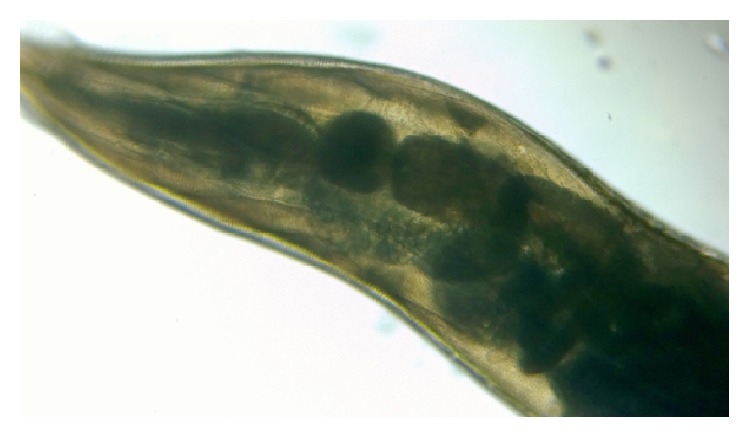
Low-power microscopic view of Enterobius vermicularis
Image: “Double bulb oesophagus of Enterobius vermicularis, under low power” by Kaniyarakkal V et al. License: CC BY 4.0
Adult Ascaris lumbricoides worm
Image: “An adult Ascaris lumbricoides worm” by CDC Division of Parasitic Diseases. License: Public Domain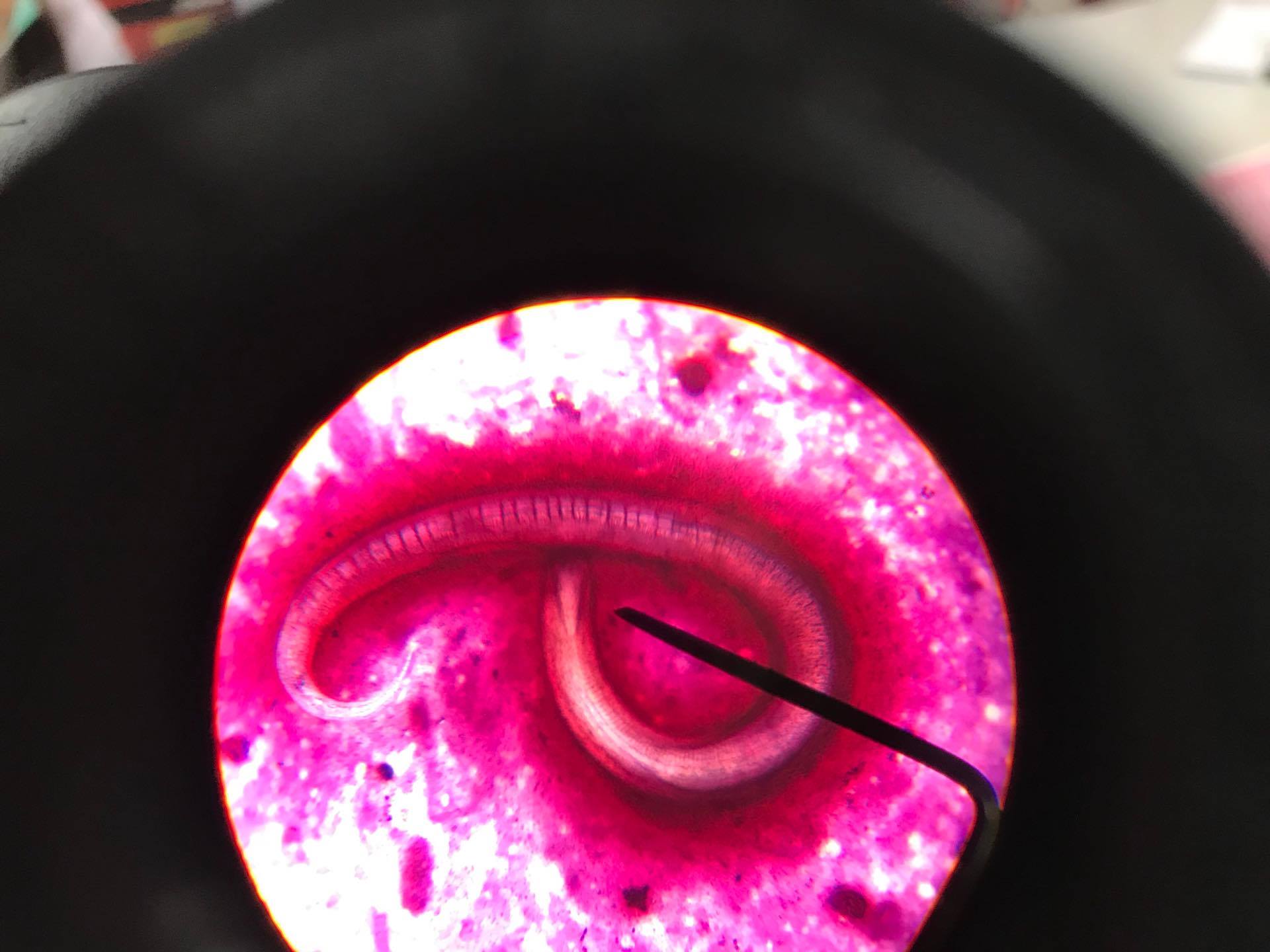
Strongyloides stercoralis parasite
Image: “Strongyloides stercoralis in sputum” by CDC Division of Parasitic Diseases. License: CC BY 4.0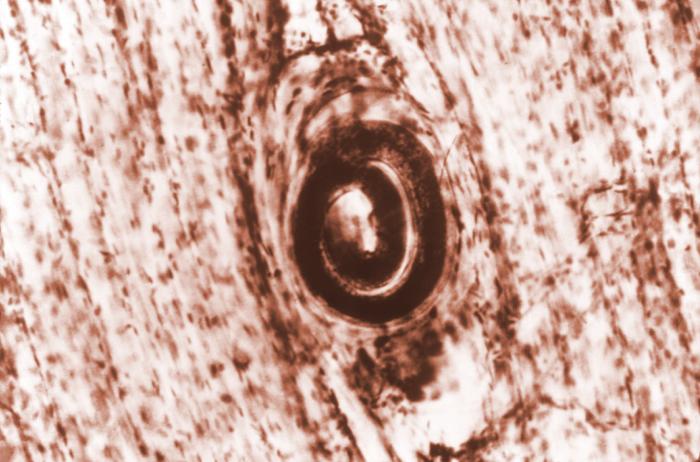
Trichinella spiralis cyst embedded in muscle tissue in a case of trichinellosis:
Trichinellosis is acquired by ingesting meat containing cysts (encysted larvae) of the roundworm parasite.